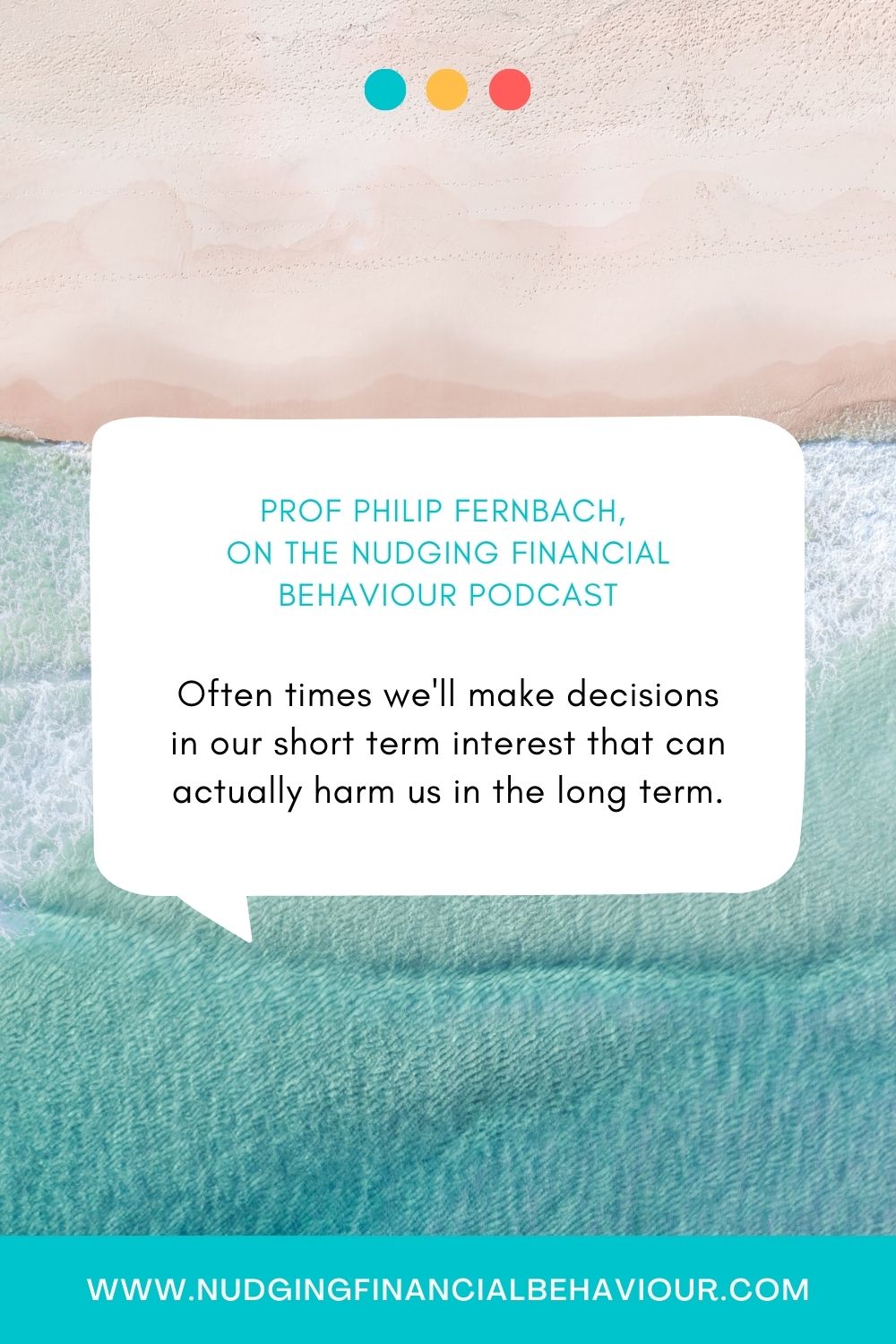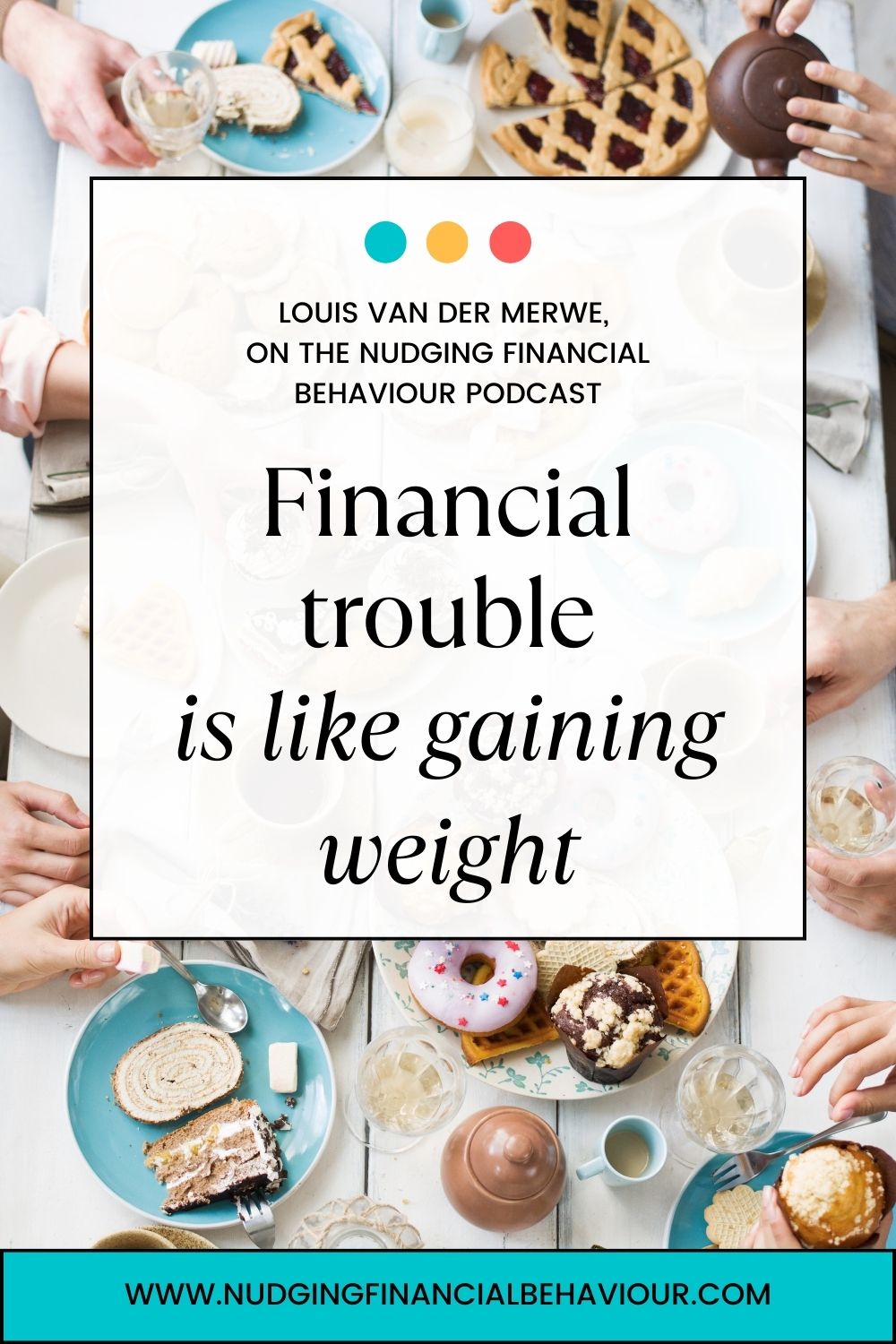We’ve reached the final instalment of season one of our podcast on behavioral finance! We need to recap some things though. We’ve gone over several behavioural biases, and I’d like to make sure that you know how to recognise them. These cognitive biases are important things to be aware of when it comes to making investment decisions.
Here’s Dr Daniel Crosby reminding us how biases are created over time…
Even though half owes to genetic factors, there’s still almost another half that’s within our control and usually much less depends on what just sort of happens to us. So we’re not totally in control of these decisions but we are largely in control and environmental factors have less of an influence than we sometimes think.
I’ve also got some extra footage from each of the interviews we had with our various experts that we spoke to during this season. Of course, I have to let them have the final word and share some of their personal mishaps with money, but also their advice to you.
Catch this final episode on our YouTube channel or on your favourite podcast platform. And please share with others that might be interested.
So, to begin and to make sure we all know that we’ve all made mistakes with money, we heard some stories of bad financial decisions that our guests made. You’ll need to watch the video to hear all the stories but let me share Dirk Groeneveld (Certified Financial Planner at Client Care) and Louise Bedford’s (Author, trading mentor, and host of Talking Trading) stories…
Between Dirk and his wife, they have 5 children, and they needed a home. They stretched themselves to buy a home to accommodate everyone. They had to do alterations later on and then that cost more money. When he eventually sold the home and reflected on that decision he realised that financially they had lost money overall. Being the positive person that Dirk is, he does acknowledge that it was the best thing for the family, to have that home, but financially, not the best.
For Louise, she lent A$250 000 to a friend she had known for 11 years. He was in the start-up business, but he bluffed her. He went to the Ukraine and spent all the money on prostitutes!! Her lesson…
Even if it is a friend asking for money you still need to do your due diligence! Share on XAfter listening to everyone’s stories I feel like it’s safe to say… read the fine print, be careful of giving money to friends, and watch out for property!
The first thing I want to go over quickly is the concept of System 1 and System 2 thinking. Our System 1 brain thinks fast, using past experiences to create context. It reacts to stimuli – information, sounds, sights, etc. and then looks at experiences you’ve had to create a response. Our System 2 brain thinks a lot slower, using far more of your body’s resources to calculate an accurate answer to a problem.
The reason this is important for this discussion is because System 1 is full of biases that act unconsciously on our decision making. If we’re not careful, we can easily make decisions that are irrational – leading to choices about our money that aren’t great.
Then we got onto the actual behavioural biases. We started with overconfidence bias, where we overestimate our skills or our knowledge when making a decision.
This bias can be broken into two parts:
Both of them have a lot to do with the fact that we don’t like uncertainty and we often try to gain as much information as possible (that’s illusion of knowledge) and then convince ourselves that we have the ability to influence a situation even if we don’t (that’s the illusion of control).
This bias is a real danger to our financial decision making. It’s too easy to slip from being confident in a decision to being overconfident. When you’re overconfident, you don’t take responsibility for failures – the tendency is then to blame the market when you lose money, rather than your bad investment decision.
It’s so easy to be overconfident, that even some of our guests have fallen prey to this behavioural bias.
Rob van Eyden (CEO of IG Markets South Afirca) told us a story of when he bought 3 shares that were going up and doing well… next thing you know overconfidence bias kicked in, as well as Gambler’s Fallacy! Because his first 3 trades did well, he assumed that the 4th trade would obviously be a winner. So he ignored all of his good systems and risk management and that 4th trade ended up wiping out all the profits of the prior 3 trades. In one fell swoop!
Philip Fernbach shared how he got very interested in the Tesla story. He invested a bunch of money in options, thinking he was making a great investment, but he failed to anticipate demand issues that arose which caused the share to crash. So while he still believes in the Tesla story, he went into that investment a little overconfident.

See, we all struggle with it. Behavioral biases in investing is a thing!
We then moved onto confirmation bias, which is where we tend to only look for information or facts that confirm what we already believe. Beware social media!
It’s quite simple to understand this one. We have a view of the world with opinions on topics and we don’t like that to be challenged. Our natural reaction is to seek out information that confirms what we already hold to be true. It’s hard to look at a different point of view because that might mean that you have to change your opinion.
How is this potentially bad for your financial decisions? It limits you by preventing you from gathering all the facts before making a decision. If you believe an investment is good before you start your research, you’ll cling to information that supports your belief. You could then end up investing in something that isn’t that great because you didn’t look at all of the facts available.
Spotting this bias in yourself can be as easy as looking at your Google search history. If you’re already inclined to think that an investment opportunity is good, your research question in the search bar will show it in the way you frame the question.
The same goes for when you think that the investment isn’t such a good idea.
And all that talk about how you framed the question, takes us quite nicely onto the next behavioural bias we discussed, which is the framing effect. This one is all about how we’re presented with information and how that changes how you then feel about the information.
Framing is used all the time to help shape our understanding of the world. Some even argue that framing is simply giving you context for a topic or piece of information, and without framing, you wouldn’t be able to understand that topic. Framing also happens naturally in our own minds because we look at information based on our past experiences and the knowledge we have on a topic.
While it’s true that framing isn’t necessarily bad, there are some points about framing and the impact it can have on you that we need to be aware of. Marketers use framing all the time to highlight the good and hide the bad.
When it comes to investing, having too narrow a frame can be a very bad thing. A narrow frame means that you only look at a share or an investment on its own. You don’t look at your whole portfolio or your overall wealth before making decisions to sell or buy.
We then ended the season by looking at anchoring and how completely arbitrary numbers or pieces of information can influence how we value something.
An anchor point is actually quite useful in everyday life. It will help you to make estimates and work things out rather than having a wild guess about information. The problem is that we’re too easily influenced by random anchors that we don’t even notice the anchors that we cling to because we feel like they make sense.
Anchors are linked to just about every other cognitive bias, so it’s really important that you become aware of them and interrogate financial decisions to ensure that you’re not clinging to an anchor that isn’t actually helping you. This is an important thing for investors to remember!
Here’s what our guests said about being anchored to arbitrary pieces of information when making a decision…
Wynand Gouws (Certified Financial Planner at Gradidge Mahura Investments) warned about anchoring to interest rates. He shared his experience with clients shopping for property, knowing what the current interest rate is and what that means for their mortgage repayments. But, what do we know about the interest rate? It changes. Sometimes it goes up and up… and then what happens? Your mortgage repayments increase and you can’t afford the property anymore!

Rachel Alberts (digital media lead at a leading retailer in South Africa) told us about a time when she bought into a crypto start-up. She bought some shares and they did very well. But then the shares got de-listed from the exchange and she had to move them into a crypto wallet. She did not do her research! She transferred her shares to the crypto wallet and then realised that the withdrawal fees were really high… she recalls them being about 30%. And then, she was anchored to that! And so she didn’t withdraw her shares, she left them in the wallet. And later, the share crashed and she lost her money, so now… there isn’t anything to withdraw!
Now, I know it might feel like we’re fighting a losing battle with so many behavioural biases influencing the decisions we’re making all the time, but there are ways to combat biases – being aware of them is the first battle.
This is why I asked each of our guests what they think is the number one reason people get into financial trouble. Let’s hear what they have to say. Remember, awareness is powerful, listen with an open mind….
Prof Philip Fernbach says it’s because we’re too present-focused and we don’t think about the long term.
Often times we’ll make decisions in our short term interest that can actually harm us in the long term.
For Nadia de Weerdt (registered debt counsellor), she laments on the post-traumatic stress that debt counsellors are going through after Covid. I don’t think we can ever underestimate what a sudden knock on your earnings can do to your debt situation. And then Louis van der Merwe (Certified Financial Planner at WealthUp and Host of Ensombl Advice South Africa) summed it all up quite nicely….
Financial trouble is like gaining weight. It doesn’t happen overnight. It’s the slow, additional, less-favourable decisions…
If you’re aware of the pitfalls and the behavioural biases, I firmly believe you can start changing your habits and make better decisions with your money. You just need to take the time to interrogate the information in front of you and your reason for wanting to make a particular decision. If you can do that, you can break the cycle.

There is so much to cover in behavioural finance – we’ve only just scratched the surface here in season 1. This is why in the next season – yes, we’re going to be doing a second season – we’re going to be exploring even more behavioural and emotional biases. I’ve also got a few other topics I want to cover. But, I’d also love to hear from you. Feel free to drop a comment below and let us know what content you’d like to get from us.
I really hope that you’ve taken away some interesting insights and can start to practice how to recognise the influence of behavioural biases in decision making.
Leave us some comments below.
In Season 2 we unpack more behavioral biases in investment decision-making. The sunk cost fallacy, loss aversion, regret aversion bias, self serving bias, hindsight bias, the status quo effect, the endowment effect, the mere exposure effect, base rate fallacy, information bias, or even the illusory truth effect…. the list can go on and one. Let us know in the comments what else you’d like to hear us talk about.
I am passionate about helping people understand their behaviour with money and gently nudging them to spend less and save more. I have several academic journal publications on investor behaviour, financial literacy and personal finance, and perfectly understand the biases that influence how we manage our money. This blog is where I break down those ideas and share my thinking. I’ll try to cover relevant topics that my readers bring to my attention. Please read, share, and comment. That’s how we spread knowledge and help both ourselves and others to become in control of our financial situations.

Dr Gizelle Willows
PhD and NRF-rating in Behavioural Finance
Receive gentle nudges from us:
[user_registration_form id=”8641″]
“Essentially, all models are wrong, but some are useful.” – George E.P. Box
